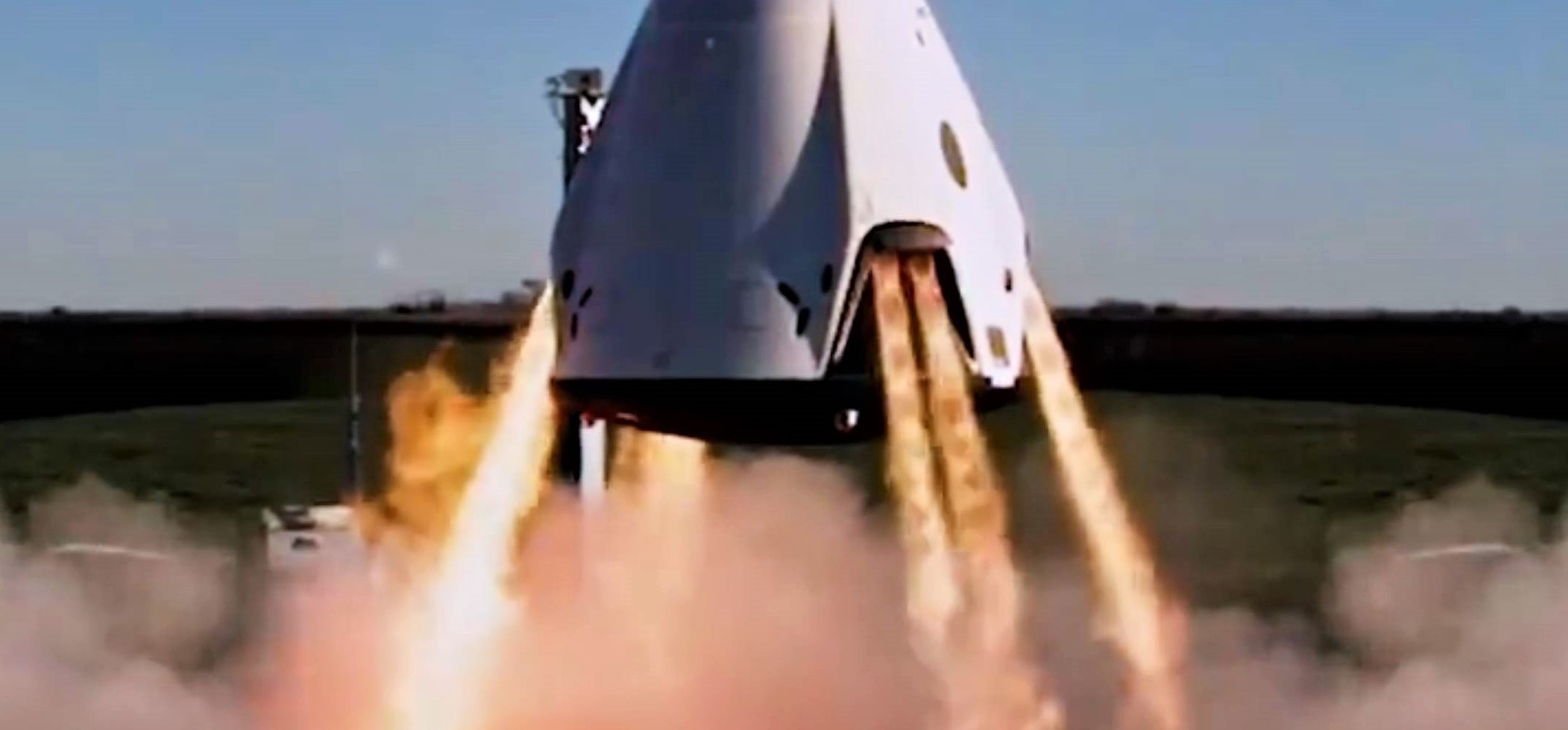
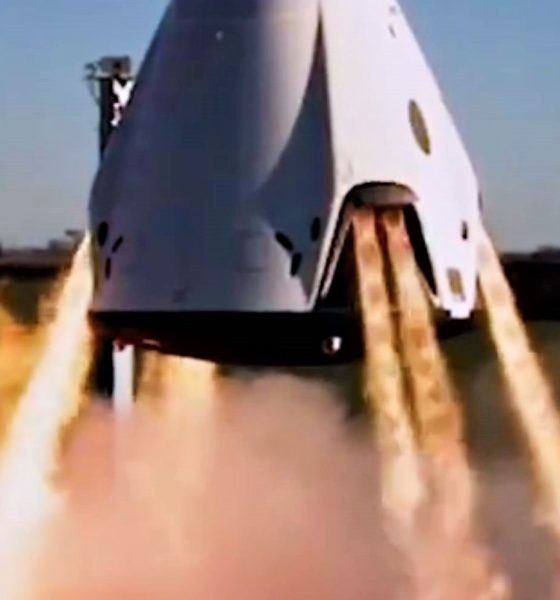
News
SpaceX Crew Dragon spacecraft set to static fire SuperDraco abort thrusters after delays
Originally scheduled for early November, SpaceX now plans to static fire a Crew Dragon capsule’s SuperDraco abort thrusters no earlier than Wednesday, November 13th. Success would pave the way for SpaceX to launch the spacecraft’s in-flight abort (IFA) before the end of 2019.
In April 2019, a bad design choice finally reared its head, triggering an oxidizer leak and exotic titanium chemical fire that lead to the catastrophic explosion of Crew Dragon capsule C201, the first upgraded spacecraft to successfully launch, dock with the ISS, and return to Earth. That explosion occurred shortly after a successful Draco maneuvering thruster test and just milliseconds before the planned ignition of C201’s eight SuperDraco abort thrusters.
SpaceX planned on reusing flight-proven Crew Dragon capsule C201 to complete its In-Flight Abort (IFA) test, in which the spacecraft will attempt to escape from Falcon 9 during Max Q, the most aerodynamically stressful period of launch. After C201’s premature demise, SpaceX was forced to reassign new Crew Dragon spacecraft already in production, and capsule C205 – previously assigned to Dragon’s Demo-2 astronaut launch debut – was delivered to SpaceX’s Florida launch facilities in early October.
C205 will now support SpaceX’s IFA test. However, prior to launch, SpaceX (or NASA, or both entities) want to ensure that the fixes and upgrades retroactively applied to Crew Dragon will prevent C201’s failure mode from reoccurring. This proof will come in the form of a static fire test identical to the one that caused C201’s explosion. Dragon capsule C205 will be loaded with liquid dinitrogen tetroxide (also known as NTO or N2O4) and monomethylhydrazine (MMH) fuel and fire its much smaller Draco maneuvering thrusters.
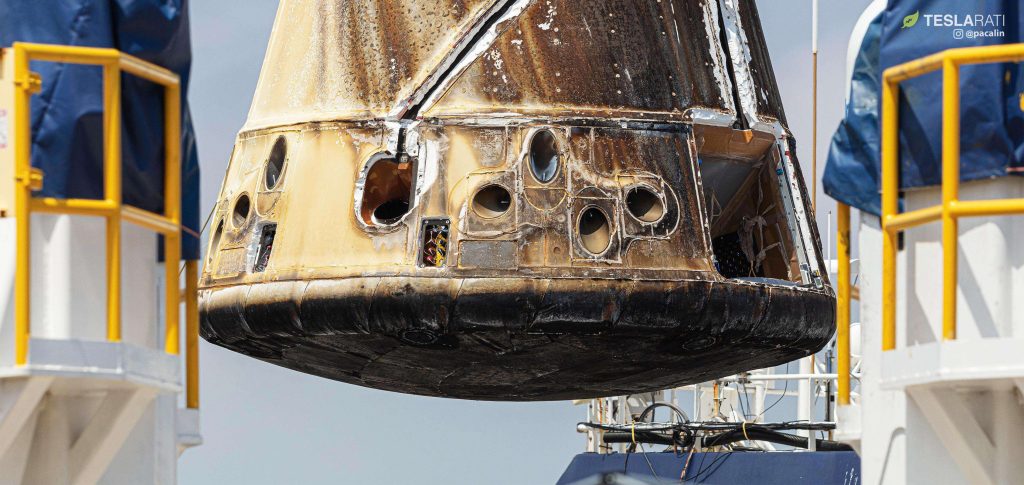
Lastly, C205 will ignite its eight SuperDraco abort thrusters – capable of producing more than 570 kN (128,000 lbf) of combined thrust – to conclude the static fire acceptance test. NASA and SpaceX will likely analyze the results together, while SpaceX will refurbish and refuel the spacecraft as expediently as possible. If everything goes as planned, Crew Dragon C205 will be integrated with its disposable trunk section and transported to Launch Complex 39A sometime in late-November or December.
In an impressive demonstration of SpaceX’s ability to work fast, the company managed to determine the cause of C201’s explosion, correct design flaws, prove those corrections with extensive testing, modify Crew Dragon C205 in light of those changes, and ship the completed spacecraft to Florida in less than six months. NASA Commercial Crew Program Manager Kathy Lueders, rare to heap praise, deemed SpaceX’s response “a pretty phenomenal turnaround.”
NASASpaceflight reporter Michael Baylor says that Crew Dragon’s static fire is now scheduled no earlier than the morning of November 13th, a delay of 11 days from the static fire’s first known target, November 2nd. It’s unclear what triggered the delay, but it would be unsurprising for SpaceX to be treading with extreme caution in a bid to avoid another serious Crew Dragon anomaly.
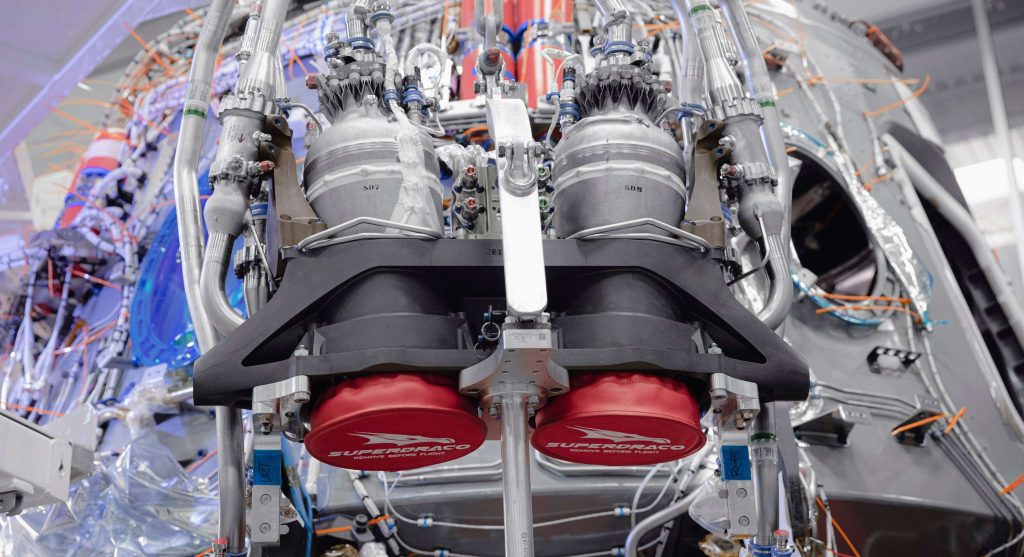
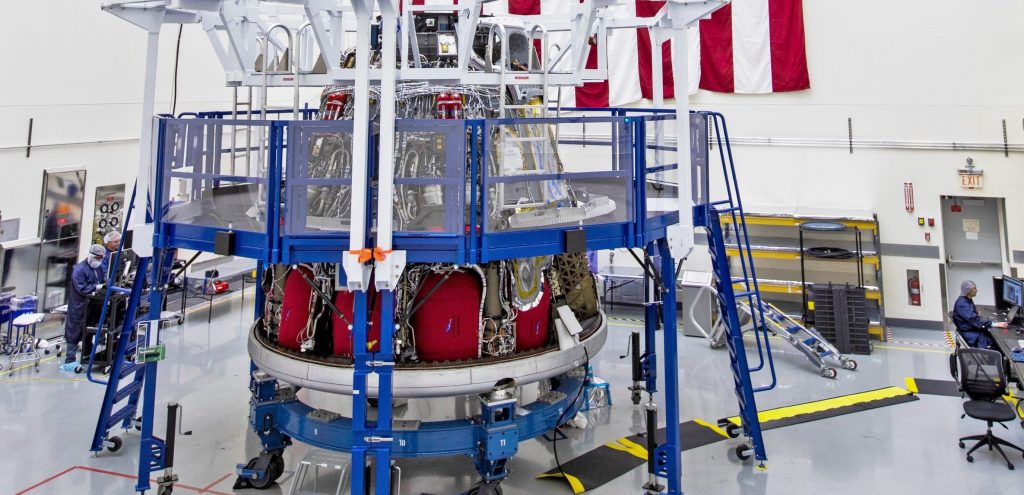
If all goes as planned during the test and the post-test inspections raise no red flags, SpaceX and NASA will likely be ready to launch Crew Dragon’s IFA test some 4-6 weeks after. Stay tuned for updates.
Check out Teslarati’s Marketplace! We offer Tesla accessories, including for the Tesla Cybertruck and Tesla Model 3.

Elon Musk
Elon Musk’s X will start using a Tesla-like software update strategy
The initiative seems designed to accelerate updates to the social media platform, while maintaining maximum transparency.

Elon Musk’s social media platform X will adopt a Tesla-esque approach to software updates for its algorithm.
The initiative seems designed to accelerate updates to the social media platform, while maintaining maximum transparency.
X’s updates to its updates
As per Musk in a post on X, the social media company will be making a new algorithm to determine what organic and advertising posts are recommended to users. These updates would then be repeated every four weeks.
“We will make the new 𝕏 algorithm, including all code used to determine what organic and advertising posts are recommended to users, open source in 7 days. This will be repeated every 4 weeks, with comprehensive developer notes, to help you understand what changed,” Musk wrote in his post.
The initiative somewhat mirrors Tesla’s over-the-air update model, where vehicle software is regularly refined and pushed to users with detailed release notes. This should allow users to better understand the details of X’s every update and foster a healthy feedback loop for the social media platform.
xAI and X
X, formerly Twitter, has been acquired by Elon Musk’s artificial intelligence startup, xAI last year. Since then, xAI has seen a rapid rise in valuation. Following the company’s the company’s upsized $20 billion Series E funding round, estimates now suggest that xAI is worth tens about $230 to $235 billion. That’s several times larger than Tesla when Elon Musk received his controversial 2018 CEO Performance Award.
As per xAI, the Series E funding round attracted a diverse group of investors, including Valor Equity Partners, Stepstone Group, Fidelity Management & Research Company, Qatar Investment Authority, MGX, and Baron Capital Group, among others. Strategic partners NVIDIA and Cisco Investments also continued support for building the world’s largest GPU clusters.
News
Tesla FSD Supervised wins MotorTrend’s Best Driver Assistance Award
The decision marks a notable reversal for the publication from prior years, with judges citing major real-world improvements that pushed Tesla’s latest FSD software ahead of every competing ADAS system.

Tesla’s Full Self-Driving (Supervised) system has been named the best driver-assistance technology on the market, earning top honors at the 2026 MotorTrend Best Tech Awards.
The decision marks a notable reversal for the publication from prior years, with judges citing major real-world improvements that pushed Tesla’s latest FSD software ahead of every competing ADAS system. And it wasn’t even close.
MotorTrend reverses course
MotorTrend awarded Tesla FSD (Supervised) its 2026 Best Tech Driver Assistance title after extensive testing of the latest v14 software. The publication acknowledged that it had previously criticized earlier versions of FSD for erratic behavior and near-miss incidents, ultimately favoring rivals such as GM’s Super Cruise in earlier evaluations.
According to MotorTrend, the newest iteration of FSD resolved many of those shortcomings. Testers said v14 showed far smoother behavior in complex urban scenarios, including unprotected left turns, traffic circles, emergency vehicles, and dense city streets. While the system still requires constant driver supervision, judges concluded that no other advanced driver-assistance system currently matches its breadth of capability.
Unlike rival systems that rely on combinations of cameras, radar, lidar, and mapped highways, Tesla’s FSD operates using a camera-only approach and is capable of driving on city streets, rural roads, and freeways. MotorTrend stated that pure utility, the ability to handle nearly all road types, ultimately separated FSD from competitors like Ford BlueCruise, GM Super Cruise, and BMW’s Highway Assistant.
High cost and high capability
MotorTrend also addressed FSD’s pricing, which remains significantly higher than rival systems. Tesla currently charges $8,000 for a one-time purchase or $99 per month for a subscription, compared with far lower upfront and subscription costs from other automakers. The publication noted that the premium is justified given FSD’s unmatched scope and continuous software evolution.
Safety remained a central focus of the evaluation. While testers reported collision-free operation over thousands of miles, they noted ongoing concerns around FSD’s configurable driving modes, including options that allow aggressive driving and speeds beyond posted limits. MotorTrend emphasized that, like all Level 2 systems, FSD still depends on a fully attentive human driver at all times.
Despite those caveats, the publication concluded that Tesla’s rapid software progress fundamentally reshaped the competitive landscape. For drivers seeking the most capable hands-on driver-assistance system available today, MotorTrend concluded Tesla FSD (Supervised) now stands alone at the top.
News
Elon Musk’s Grokipedia surges to 5.6M articles, almost 79% of English Wikipedia
The explosive growth marks a major milestone for the AI-powered online encyclopedia, which was launched by Elon Musk’s xAI just months ago.

Elon Musk’s Grokipedia has grown to an impressive 5,615,201 articles as of today, closing in on 79% of the English Wikipedia’s current total of 7,119,376 articles.
The explosive growth marks a major milestone for the AI-powered online encyclopedia, which was launched by Elon Musk’s xAI just months ago. Needless to say, it would only be a matter of time before Grokipedia exceeds English Wikipedia in sheer volume.
Grokipedia’s rapid growth
xAI’s vision for Grokipedia emphasizes neutrality, while Grok’s reasoning capabilities allow for fast drafting and fact-checking. When Elon Musk announced the initiative in late September 2025, he noted that Grokipedia would be an improvement to Wikipedia because it would be designed to avoid bias.
At the time, Musk noted that Grokipedia “is a necessary step towards the xAI goal of understanding the Universe.”
Grokipedia was launched in late October, and while xAI was careful to list it only as Version 0.1 at the time, the online encyclopedia immediately earned praise. Wikipedia co-founder Larry Sanger highlighted the project’s innovative approach, noting how it leverages AI to fill knowledge gaps and enable rapid updates. Netizens also observed how Grokipedia tends to present articles in a more objective manner compared to Wikipedia, which is edited by humans.
Elon Musk’s ambitious plans
With 5,615,201 total articles, Grokipedia has now grown to almost 79% of English Wikipedia’s article base. This is incredibly quick, though Grokipedia remains text-only for now. xAI, for its part, has now updated the online encyclopedia’s iteration to v0.2.
Elon Musk has shared bold ideas for Grokipedia, including sending a record of the entire knowledge base to space as part of xAI’s mission to preserve and expand human understanding. At some point, Musk stated that Grokipedia will be renamed to Encyclopedia Galactica, and it will be sent to the cosmos.
“When Grokipedia is good enough (long way to go), we will change the name to Encyclopedia Galactica. It will be an open source distillation of all knowledge, including audio, images and video. Join xAI to help build the sci-fi version of the Library of Alexandria!” Musk wrote, adding in a later post that “Copies will be etched in stone and sent to the Moon, Mars and beyond. This time, it will not be lost.”








